Conservation
Articles Out with
Papa Figos Algarve
Books
At One with Nature - The Biter Bit
With fungi foragers fighting over free food, Algarve woodlands can become warzones. Sue Parker considers the causes of conflict and the ebb and flow of fortunes.
Based on an article by Sue Parker in Algarve Resident, September 2016. Algarve Resident is the leading English-language newspaper and the source of essential information for Residents and would-be Residents in the Algarve.
For more information about Algarve Resident...
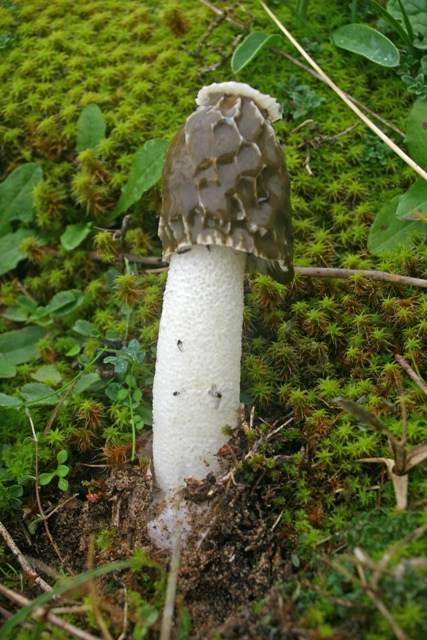
A freshly-emerged Stinkhorn fungus Phallus impudicus
If you gather wild mushrooms, you will know how important it is to cut through the caps and stems to check for infestation by maggots. Flies and other bugs are very fond of fungi, especially soft, succulent ones such as ceps. Whether they bite you or the mushrooms you seek, insects can be real pests, the bugbear of the woodland fungus forager.
I don’t know anyone who enjoys being bitten by bugs, but I do know some mushrooms for which being a feast for flies seems to be their reason d’etre. One such group goes by the unattractive name of stinkhorns – pongy and unattractive to us, perhaps, but oh so attractive to insects!
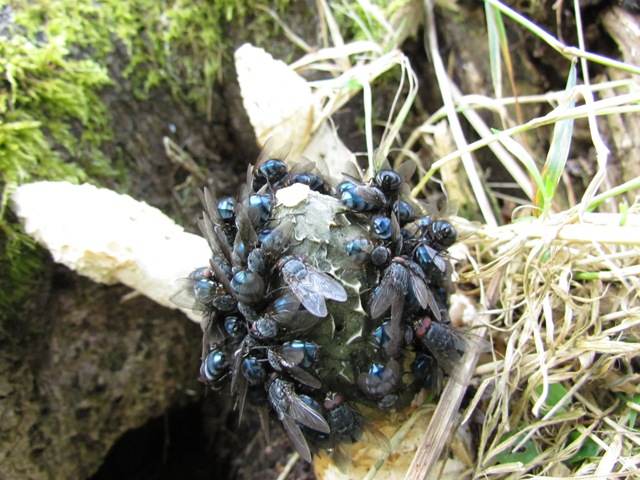
A swarm of flies feasting on Stinkhorn gleba
There are several dozen stinkhorn species worldwide. They reproduce via underground ‘eggs’ from which emerge spore-bearing structures of various shapes; some are in the form of a birdcage, others have one or more finger-like extremities, and all are coated with a sticky spore-laden gleba that flies find irresistible. The smell of Phallus impudicus, a very common stinkhorn in the Algarve, attracts flies from far and wide with the prospect of a feast. They then leave with feet covered in stinkhorn spores that are carried off to new locations.
Some people are more sensitive than others to bites by midges, mosquitoes and various other bugs, but unless you are exceptionally thick skinned you know at once if you have been the target of an insect attack. Not so with fungal infections, which creep up and take hold gently – at least initially. Athlete’s foot eats human skin, attacking from the outside. It is at least inconvenient and unpleasant, and in severe cases very painful, but this affliction is rarely life threatening. Toenail fungus is also a problem and very difficult to eradicate. More often than not these fungal infections recur soon after treatment is stopped. If you are troubled by an ailment of this kind, you are not alone: toenail fungus affects about 10% of adults, and the older you are the more likely it is that you will be bugged by this kind of fungal infection. Bugs – insects of various kinds, that is – have even more reason to fear fungi, and perhaps it’s as well that they are blissfully unaware of the threats they face, for who will lift a finger to intervene in an insect-vs-fungus conflict? On the one hand if I do lend a hand it is to bring it down on a bug with its jaws poised to puncture my skin. And on the other hand I feel disinclined to gather fungi that are obviously the leftovers of former feasts of flies.
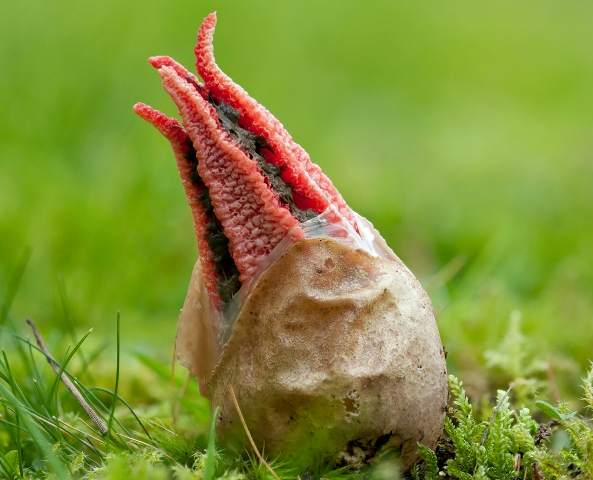
Clathrus archeri about to reveal its bug-attracting gooey ‘fingers’
The empire bites back
You would think that in any battle between feet-on-the-ground fungi and fast-flying insects the bugs would win hands down, but it’s not necessarily so. Nature is red in tooth and claw… and fingers too, at least in the case of the tiny Scarlet Caterpillarclub fungus Cordyceps militaris. Spores from this scary assassin fly through the air with the greatest of ease in the lightest of breeze. Any that alight on caterpillar larvae munching their way to maturity in herb-rich grassland invade the insect and then bide their time until the caterpillar has buried itself among grass roots to pupate. No maiden flight for these fungus-infected would-be butterflies: Cordyceps militaris feeds on the pupae, killing them slowly and converting their internal organs into orange club-shaped fungal fruitbodies on which tiny flasks packed with pods of fungus spores develop. When they are ripe, the spores are fired into the air in blunderbuss fashion - aimless in a secondary sense only, for the primary aim is to maim yet more caterpillars.
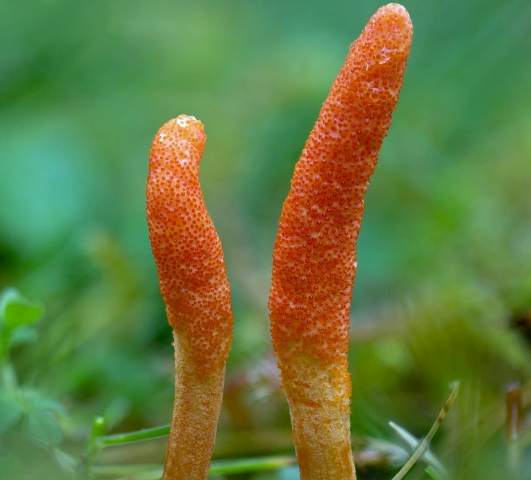
Scarlet Caterpillarclub Cordyceps militaris, a seemingly innocuous grassland club fungus
Although the insect world seems to be losing that particular battle, the war is far from over. Albeit via the process of evolution rather than by any intention, some kinds of ants have developed a remarkable ability to detect when a member of their colony has been infected by Cordyceps fungi. Soldier ants guarding the queen ant attack and kill their infected comrade before transporting its body away from the nest so that it cannot infect the rest of the colony. In the ebb and flow of fortunes in a seemingly endless war, the tide turns yet again…
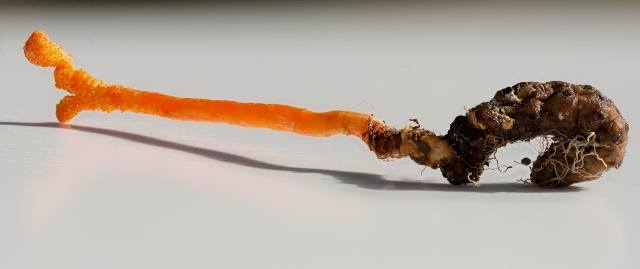
Beneath the ground, Cordyceps militaris is attached to a mummified larval host
Sue Parker's latest ebook is a revised and enlarged second edition of the acclaimed Wildflowers in the Algarve - an introductory guide. Full details here...
Buy it for just £3.95 on Amazon...
Sue Parker's 5-star acclaimed field guide to the Wild Orchids of the Algarve is now available as an ebook. Full details here...
Buy it for just £5.95 on Amazon...
Please Help Us: If you have found this information interesting and useful, please consider helping to keep First Nature online by making a small donation towards the web hosting and internet costs.
Any donations over and above the essential running costs will help support the conservation work of Plantlife, the Rivers Trust and charitable botanic gardens - as do author royalties and publisher proceeds from books by Pat and Sue.